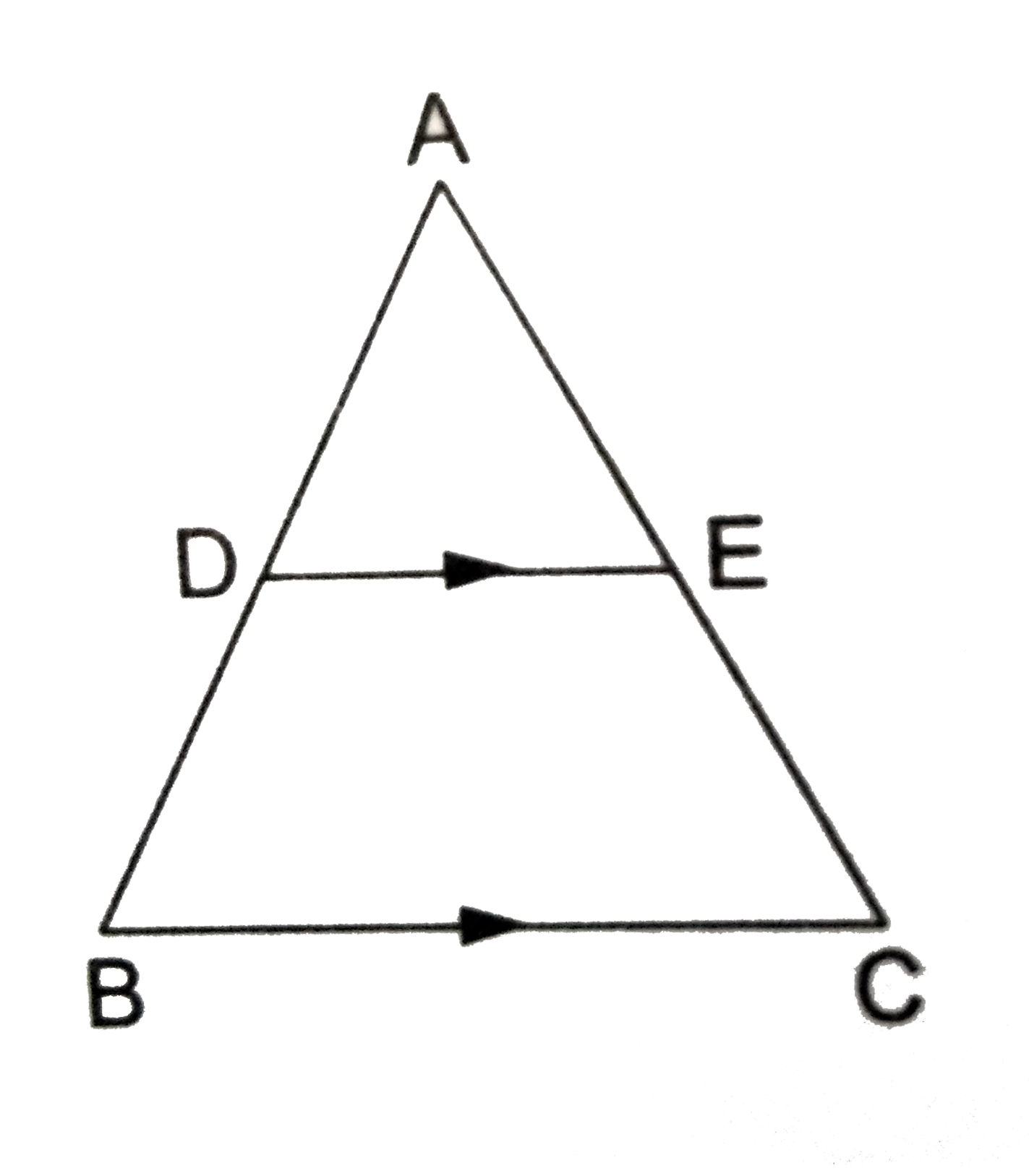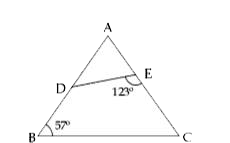In the following figure, AD=5.6 cm, AE=(x+1)cm,AB=8.4cm and EC=(x−1)cm, find AC. Given that DE∣∣BC.
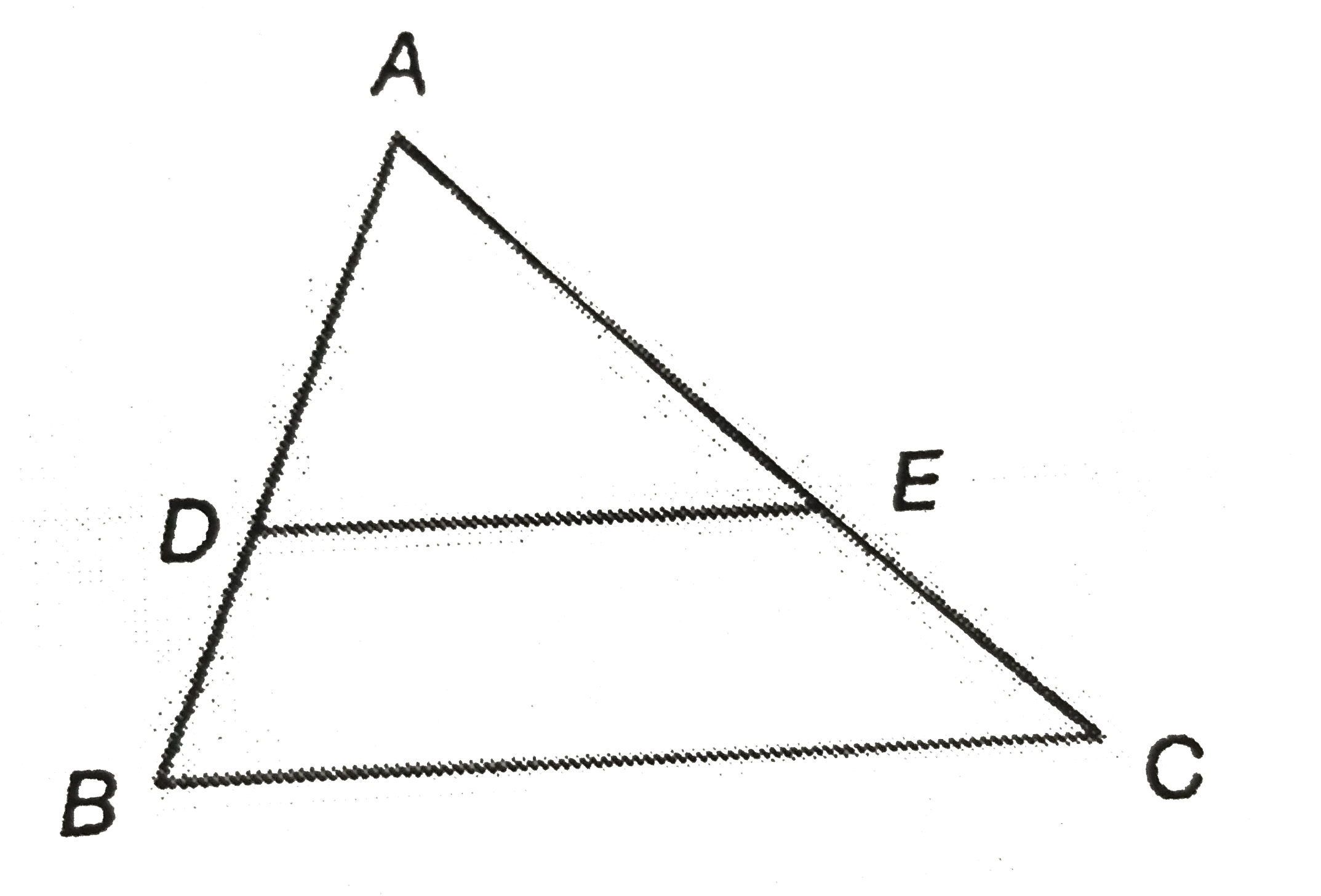
Step by step video & image solution for In the following figure, AD=5.6 cm, AE=(x+1)cm, AB=8.4cm and EC=(x-1)cm, find AC. Given that DE|| BC. by Maths experts to help you in doubts & scoring excellent marks in Class 10 exams.
Updated on:21/07/2023Topper's Solved these Questions
- SAMPLE PAPER 13BOOK - EDUCART PUBLICATIONCHAPTER - SAMPLE PAPER 13EXERCISE - PART - B (SECTION - V)
4 Videos
- SAMPLE PAPER 13BOOK - EDUCART PUBLICATIONCHAPTER - SAMPLE PAPER 13EXERCISE - PART - B (SECTION - III)
8 Videos
- SAMPLE PAPER 11 (SELF - ASSESSMENT)BOOK - EDUCART PUBLICATIONCHAPTER - SAMPLE PAPER 11 (SELF - ASSESSMENT)EXERCISE - SECTION -C
10 Videos
- SAMPLE PAPER 2 BOOK - EDUCART PUBLICATIONCHAPTER - SAMPLE PAPER 2 EXERCISE - SECTION - D
9 Videos
Similar Questions
Knowledge Check
In the figure AD=12cm,AB=20cmandAE=10cm. Find EC :
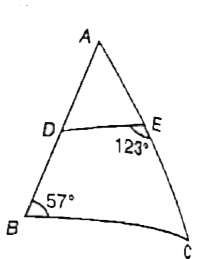 A14 cmB10 cmC8 cmD15 cm
A14 cmB10 cmC8 cmD15 cm
In the given figure, DE∣∣BC such that AD=xcm,DB=(3x+4)cm,AE=(x+3)cmandEC=(3x+19)cm. Find the value of x.
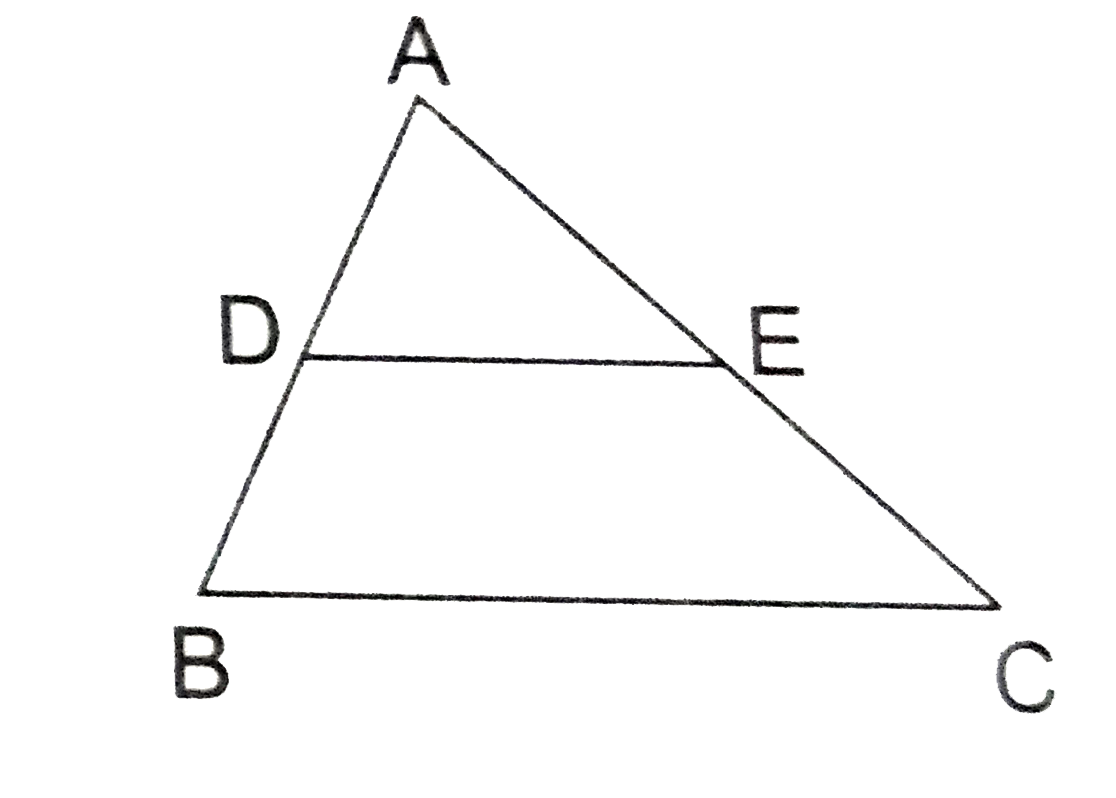
View Solution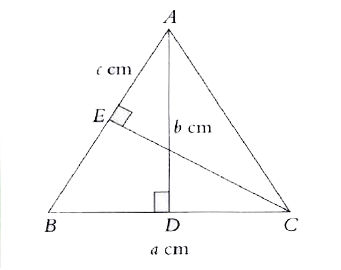
In the above figure , BC = a cm , AB = c cm , and AD = b cm .Find EC.
View SolutionIn the given figure, DE∣∣BC such that AD=xcm,DB=(3x+4)cmAE=(x+3)cm,andEC=(3x+19)cm. Find the value of x.
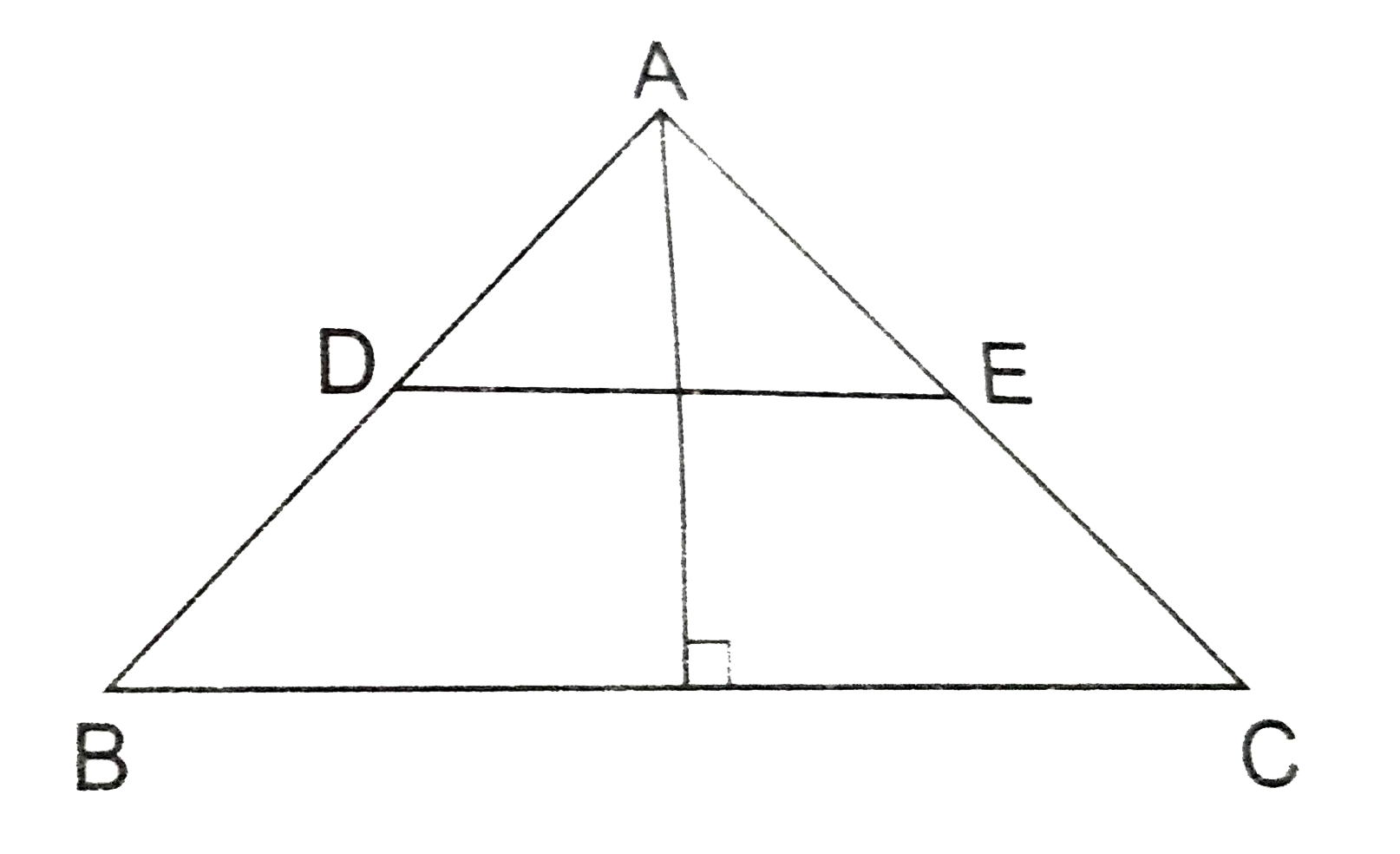
View SolutionIn the given figure find AD, BE, CF where AB = 12 cm, BC = 8 cm and AC = 10 cm.
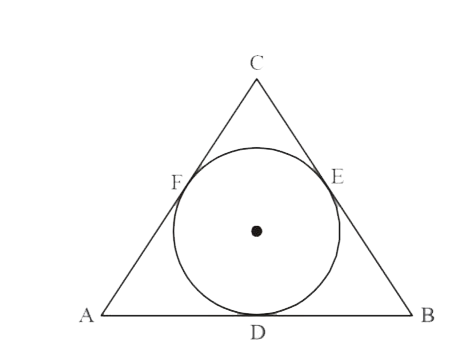
View SolutionIn the given figure, AD is the bisector of ∠BAC,AB=6cm,AC=5cm and BD=3cm, find DC.
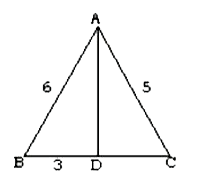
View SolutionIn the given figure, DE∣∣BC. If DE=5cm,BC=8cmandAD=3.5cm then AB=?
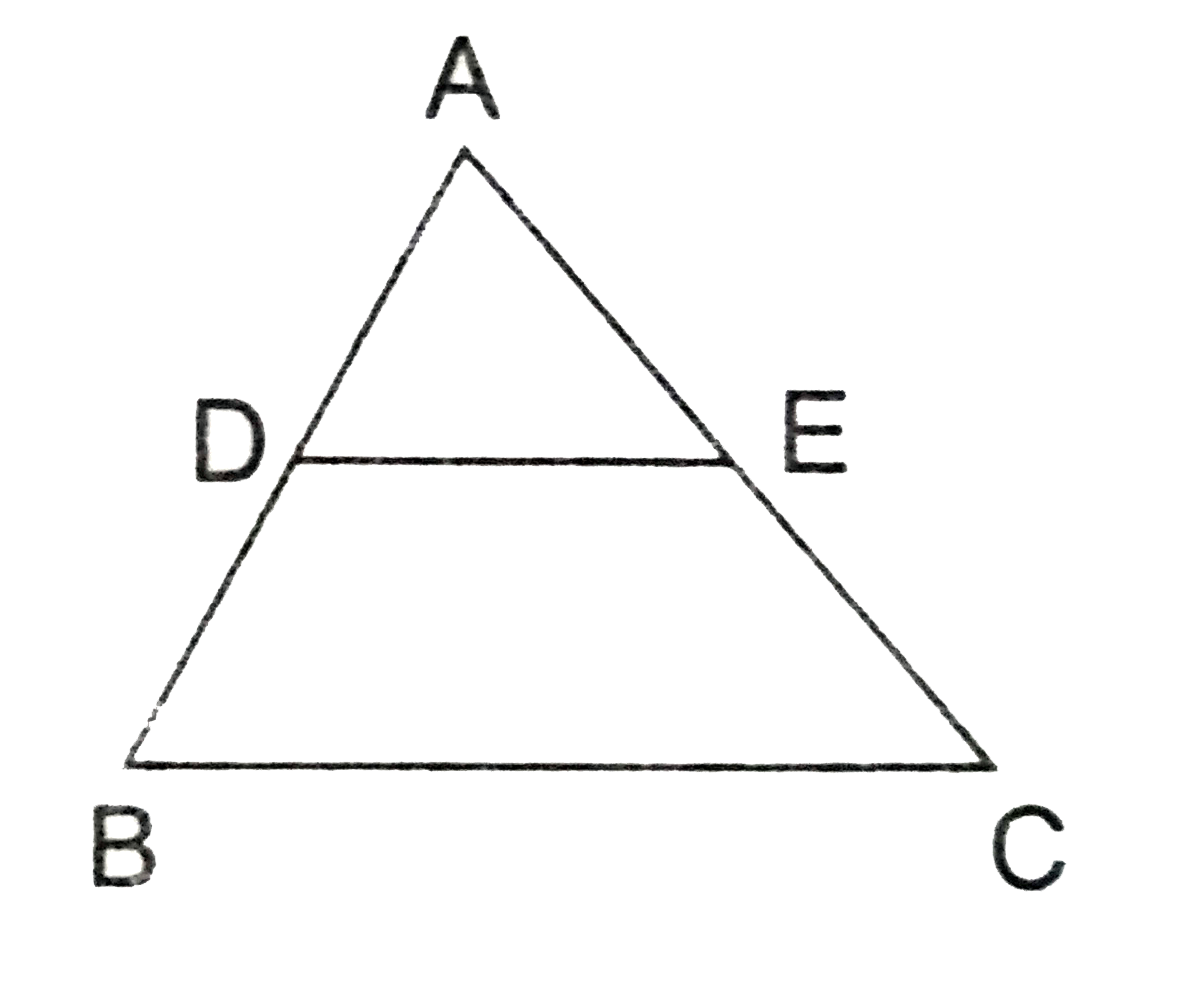
View SolutionIn the given figure, AD = 2cm, BD = 3 cm, AE = 3.5 cm and AC = 7 cm. Is DE parallel to BC ?
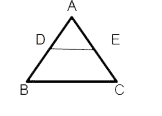
View Solution

